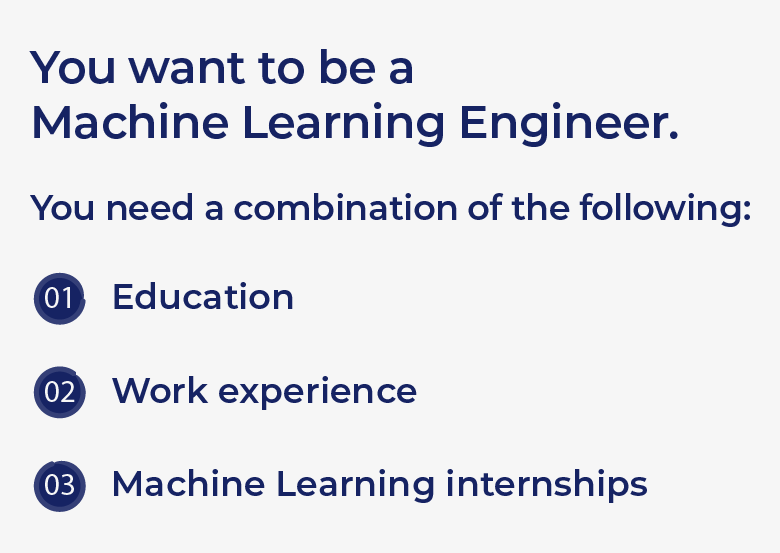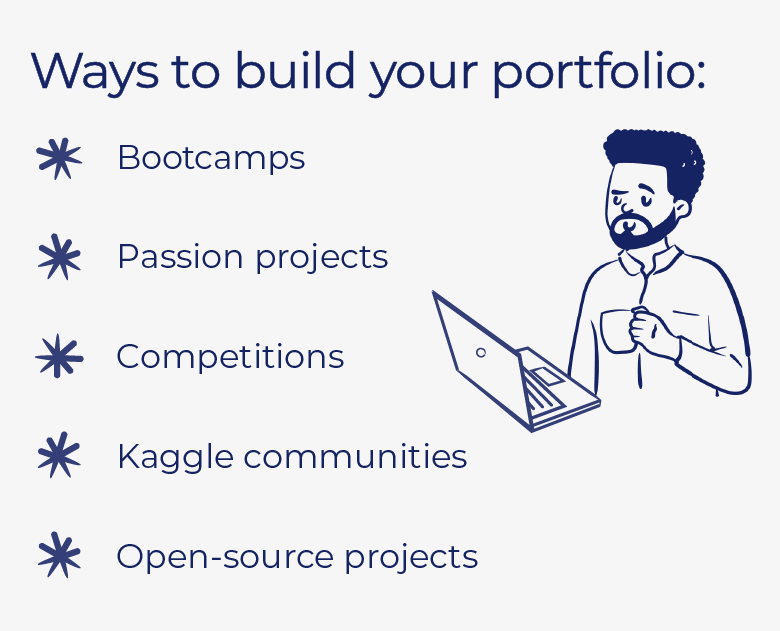How to Get a Machine Learning Internship
Machine Learning is a coveted field, and internships are necessary to break in. Find out how to land your first one.
Machine learning engineers teach computers how to learn from data to make decisions or predictions. Their job incorporates both software engineering and statistics, making these highly educated tech workers sought-after and handsomely compensated.
Machine learning solutions are becoming increasingly popular across industries. From personalizing the digital customer experience to automating maintenance management systems, machine learning models power emerging technologies like self-driving cars, Google Search, Apple’s Siri, and Netflix’s renowned recommendation engine.
In fact, this work is so important that job postings for machine learning engineers grew 343 percent in 2019, according to Indeed. MLE ranked #1 in Indeed’s best jobs of 2019, with an average base salary of $146,085 in the United States.
To become a full-fledged MLE, you need the right education, work experience (machine learning is not an entry-level role) and a few ML internships under your belt. Becoming a machine learning intern may not be straightforward, but the results are worthwhile. Here’s how to land your first role.
Understand the Major Machine Learning Concepts

Machine learning is such a new field there’s no prescribed education path for becoming an “accredited” MLE. Since the discipline is software engineering-intensive, most experts recommend obtaining a degree in computer programming or enrolling in a software engineering bootcamp, then spending a few years as a developer. Once you’ve mastered programming languages, like Java and Python, you’ll have a solid foundation to dive deeper into machine learning concepts.
Machine learning is mostly about applying concepts from statistics and computer science to data. If you decide to study on your own, structure your learning approach with this in mind. There are plenty of online tutorials, short courses, and videos to learn the theory behind the major concepts. See this guide from Elite Data Science to structure your learning.
Here’s a quick checklist of what you need to know:
- Computer programming fundamentals - Data structures, algorithms, and computer architecture
- Probability and statistics
- Data modeling and evaluation - Finding patterns, making predictions
- Applying machine learning algorithm and libraries
- Software engineering and system design
However, you may want to consider enrolling in a machine learning engineering boot camp or obtaining a certification through an MOOC provider like Coursera. This will help you fast-track your learning, gain the opportunity to work on hands-on projects, and consult with a mentor. If you're interested, you can also pursue courses in more targeted areas, like computer vision.
Build a Machine Learning Portfolio

Just like software engineers, MLEs need a portfolio of projects to prove their skills when applying for an internship or a job. The goal of each project is to use your machine learning knowledge to build projects using datasets that interest you. If you enroll in a bootcamp, a portfolio-ready capstone project is usually required for graduation, and some bootcamps offer opportunities to work on real-world projects with actual startups.
If you’re going in alone, you have several options.
- Passion projects - Build your own website showcasing projects you’ve pursued independently
- Machine learning competitions - Join hackathon-style machine learning competitions. MachineHack and TopCoder curate a live list of active competitions.
- Join a Kaggle community - Kaggle is a community of MLEs and data scientists who collaborate on projects and join competitions. You can write code on the platform’s cloud-based Jupyter notebook, access over 50,000 publicly available datasets, and use Kaggle kernels to build data models.
- Contribute to open-source projects on GitHub or BitBucket - Being active on GitHub is a must for any developer or MLE. Contribute to open-source projects or start your own.
ML projects tend to fall under these four types:
- Investigate a property of an ML tool or library
- Investigate the behavior of an ML algorithm
- Investigate and characterize a dataset or ML problem
- Implement a ML algorithm in your favorite programming language
Choose a dataset that interests you and decide on a problem that needs to be solved. If you’re an aviation enthusiast, you could build an ML model that uses video footage to detect when fighter pilots lose consciousness. Interested in psychology? Use sentiment analysis to evaluate the body language of politicians or other public figures.
Machine learning portfolios are all about process, not just the end results, so documentation is key. Narrate the story of each project, from start to finish. Always provide a readme file to describe the purpose and findings of each project. You can include images, graphs, videos, and links. These resources help recruiters understand your thought process.
Write a Resume That Flatters Your Background

Structure your resume to flatter your background and credentials. For example, if you’re short on formal ML education but your portfolio is chock-full of passion projects, put your ‘Projects’ section above work experience. Here are the most important resume sections to optimize:
For any internship or full time role, be sure to customize your resume to the job description as well. Part of this includes highlighting relevant experience, as outlined above. Part of it also has to do with using the right resume outline for your career. Learn more here.
Tailor Your Internship Search to Your Strengths

Machine learning doesn’t require a license to practice like in medicine, but it’s still a credentials-first field. “Traditionally” educated MLEs have a PhD in applied mathematics or computer programming. If you’re entering ML through a nontraditional route, such as boot camp credentials plus a bachelor’s degree in an unrelated field, you may find it harder to secure a job or internship at a major company like Facebook, Microsoft, or Google.
For example, Amazon’s 2020 machine learning internship (in conversational artificial intelligence) requires candidates to be enrolled in a PhD program in NLP (natural language processing), ML, dialog systems, or “another highly quantitative field.”
Tailor your job search to your level of experience and education background. If you’re not a classically minted MLE, search for openings at startups, where portfolio projects and work experience have more clout. Startups tend to look for candidates with a BS or MS in computer science or a related degree, and are also receptive to boot camp grads.
👉 Maintaining a strong LinkedIn presence will help with any job search. For more insight on how to do so, click here.
The information provided herein is for general informational purposes only and is not intended to provide tax, legal, or investment advice and should not be construed as an offer to sell, a solicitation of an offer to buy, or a recommendation of any security by Candor, its employees and affiliates, or any third-party. Any expressions of opinion or assumptions are for illustrative purposes only and are subject to change without notice. Past performance is not a guarantee of future results and the opinions presented herein should not be viewed as an indicator of future performance. Investing in securities involves risk. Loss of principal is possible.
Third-party data has been obtained from sources we believe to be reliable; however, its accuracy, completeness, or reliability cannot be guaranteed. Candor does not receive compensation to promote or discuss any particular Company; however, Candor, its employees and affiliates, and/or its clients may hold positions in securities of the Companies discussed.
